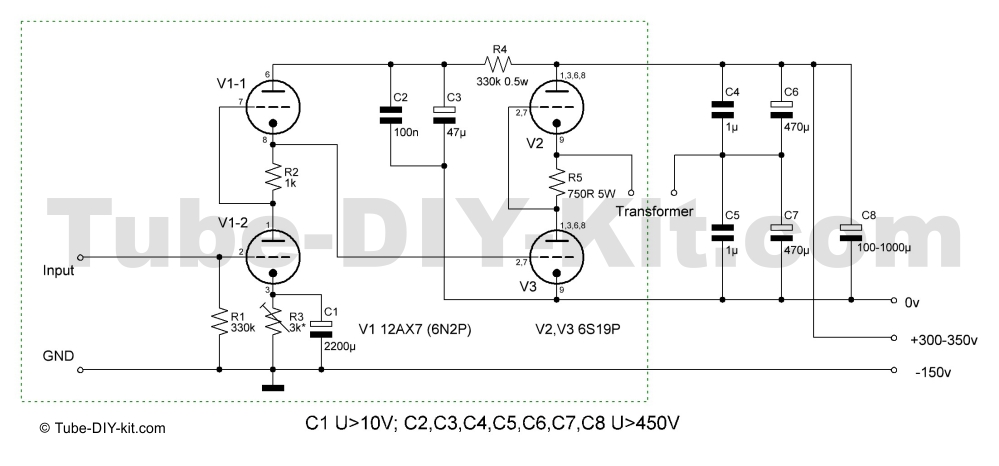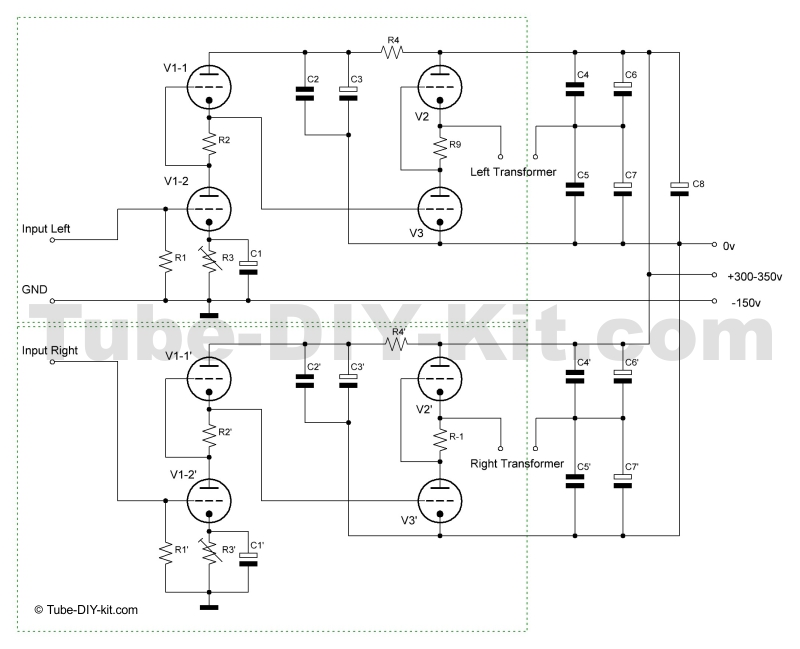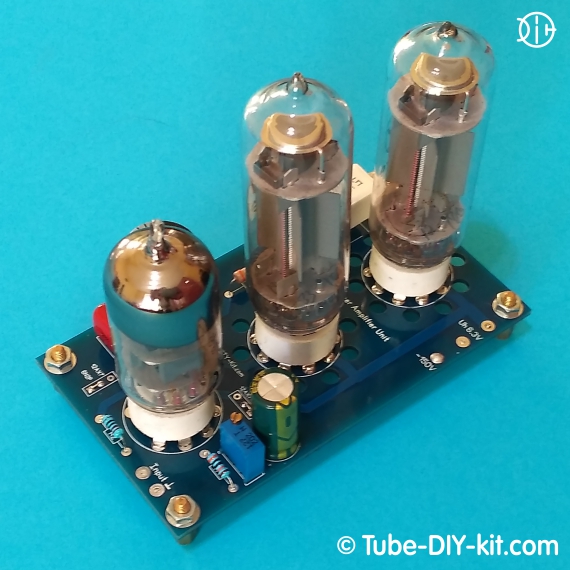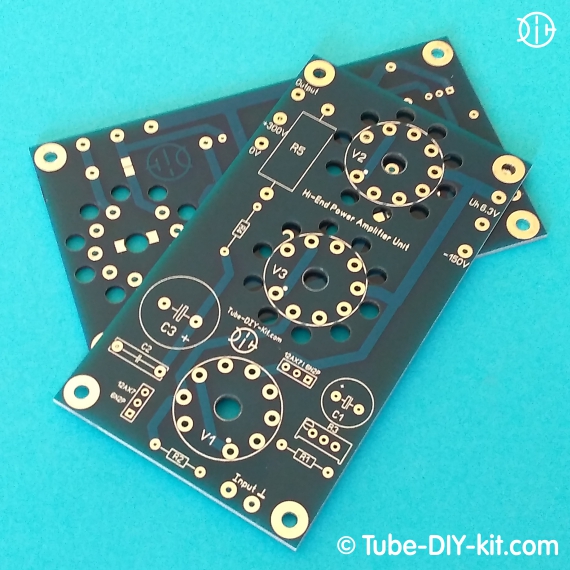Electronic DIY kit: Single Channel Hi-End Low Frequency Amplifier Unit
A three-tube, two-stage Hi-End low-frequency amplifier unit with direct connection between the stages allows you to create a high-quality amplifier with an arbitrary number of channels. Current consumption: The board size: 100 x 55 mm
The kit comes in the form of a printed circuit board
The kit does not contain scarce parts and winding units. As the output, standard 220/12V transformers with a ~40w overall power were used.
When developing, we set out to, if possible, remove all unnecessary details and elements from the sound path, and at the same time use only the affordable component base, including tubes. Using a short path, removing interstage capacities and using the positive experience of previous developments in the use of available analogs of output transformers, we achieved impressive results - bass, top, panorama, detail - everything is present. You will not be disappointed...
Regards, Developers
Circuit, instructions for assembling and setting Single Channel Hi-End Low Frequency Amplifier Unit:
Install on the board and solder the parts according to the circuit diagram and the layout of the board. Watch for polarity when installing electrolytic capacitors! There are jumpers on the board for quickly switching the heater tube V1, which allows you to use the 12AX7 tube in the first cascade. If you expect such a replacement, it is necessary, in addition to installing jumpers, to soldering the jumper under the board. Otherwise, simply solder the jumpers according to the layout of the board and the intended tube.

Circuit of Single Channel Hi-End Low Frequency Amplifier Unit
An artificial midpoint cannot be used in this amplifier, since the voltage limit between the cathode and the heater for 6N2P lamps should not exceed 100V (200V for 12AX7). Therefore, only floating heater voltage - without connection to the ground! Under the tube sockets, on the board, there are unconnected spots for fans of lighting. They can solder LEDs and organize their power supply from heater circuits.
A properly assembled amplifier unit almost does not need to be configured. During the first turn-on, it is necessary to set the resistor R3 to half the supply voltage at the cathode of the tube V2 and then check the current consumption. It should not exceed 75-80mA. Normal unit consumption is about 65-70mA.
Volume control - any, at your discretion. If possible, it is better to refuse it altogether and adjust the volume at the sound source. During test listening, try to exclude capacitor C1 from the circuit. Lose a little in gain but win in quality.

Two-unit stereo Hi-End low-frequency amplifier circuit
Above is a unit connection circuit in a stereo amplifier. The number of channels can be increased, if only the power supply provides the necessary power.
During development, this amplifier was powered from our own power supply. The AC noise was not audible. The need for stabilization of the anode and/or heating voltages is not noted. But we can not guarantee that there will be no noise 50Hz when using an external power supply.
Experiments with output transformers showed that the best results were achieved with 220/12V toroidal transformers (for speaker in the 8 ohm) and overall power from 35W, but the amplifier behaved quite adequately with heating transformers TN series. Such transformers are not expensive and are not in short supply. The main condition is that the overall power should exceed the output by 8-10 times. The use of SE output transformers is not recommended - the magnetic gap decently spoils the sound picture.


